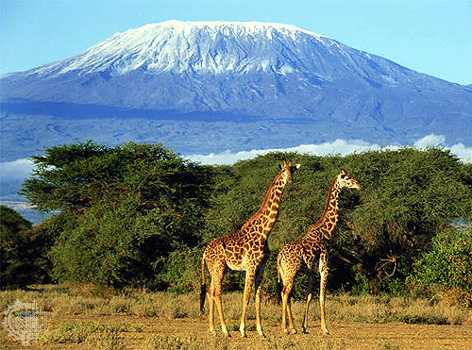Historians say Mount Kilimanjaro is one among the richest world heritage sites and that is the reason which attracted early German colonists to be the first country to occupy the mountain area and put it in the present shaped map of Tanzania.
Many stories have been told about Mount Kilimanjaro and its entire regime.
Before European interference to the mountain area, local people there (Chagga and Maasai) believed that their ancestral God, Ruwa was seated at the whitish cap, the snow. Two peaks, Kibo and Mawanze makes the name of Kilimanjaro. Being higher than the other peak, Kibo with a height of 5,985 metres is the highest peak in Africa and half snow capped.
Horrible and awesome stories have been told about Kilimanjaro, mostly connected with beliefs and legends, all because of its influence to climate, physical features and vegetation. For the Wachagga and Wamasai people who cultivate and graze cattle on the mountain foothills, have for hundreds of years, kept to respect the mountain as the “Seat of their God”.
Traditionally, the Wachagga bury their dead with the body was facing Mount Kilimanjaro, believing that the summit led to the afterlife. The mountain’s massiveness represents people, their traditional and historical pride, and the source of a very trickling sweet crystal-clear mountain water from its melting ice. The Maasai pastoralists take this “Africa’s highest peak” as their origin of creation and the source of cattle richness.
Despite of all these varied, interesting news about the mountain, the history of Kilimanjaro still remains a mystery – both to earlier explorers and the present climbers. Wachagga are the only people who seem to have a good background of the mystery behind this mountain.
They knew nothing about snow, but, believed that the whitish substance was a “powder” that was put there by their God to protect the area below (slopes where they lived) from “extreme cold evil spirits” and any person who tries to put a leg to climb this mountain would die. So mysterious is the mountain’s background that even the origin of its name – Kilimanjaro is not a local name.
Wachagga people had no names for both the two separate peaks. Each peak has its own name pronounced with a locality dialect. In Marangu locality, the people call the highest peak “Kipoo” (Kibo) and the shorter peak “Kimavense” (Mawenzi). The origin of the name that we know today – Kilimanjaro remains a mystery and much debatable. Many people, mostly tourists are trying to conquer this mountain.
Climbing mount Kilimanjaro is not an easy task and successful climbers are always toast a glass of champagne after successfully reaching the peak, and when they come down from the people, you hear one asking another, “I have climbed Mount Kilimanjaro,” have you?
Popular Posts
-
Bamburi Beach Hotel Mombasa is a newly refurbished hotel facing the Indian Ocean, a 20-minute drive north of Mombasa. It is an all-inclusi...
-
One of the many things that makes a visit to Kenya interesting, is the rich Wildlife heritage. Kenya is a habitat for almost all animals tha...
-
Historians say Mount Kilimanjaro is one among the richest world heritage sites and that is the reason which attracted early German colonists...
-
King's Castle If you are looking for a great luxurious place to spend your weekend, Tafaria Castle & Country Lodge 4 stars ...
-
Tourists enjoying a game drive Rhino Watch Lodge is a natural paradise of untouched forest of euphorbia trees. Rhino wat...
-
AIRKENYA scheduled service into the Nakuru National Park (Naishi Airstrip), commences. Clients can look forward to a 35 minutes flight ...
-
DAY 1: LAKE NAKURU Depart Nairobi City in the morning for Lake Nakuru arriving in time for lunch. Afternoon game drive. Dinner and overni...
-
Rent this beautiful fully furnished home located at the South Coast Kenya in Diani. 24 hour security surveillance and just 250 meters from t...
-
My time in turkey i have met people from different countries and to my surprise they have all have one thing i common 'patriotism'....
-
The City of Nairobi NAIROBI is the capital and largest city of Kenya . The name "Nairobi" comes from the Maasai phr...







0 comments: